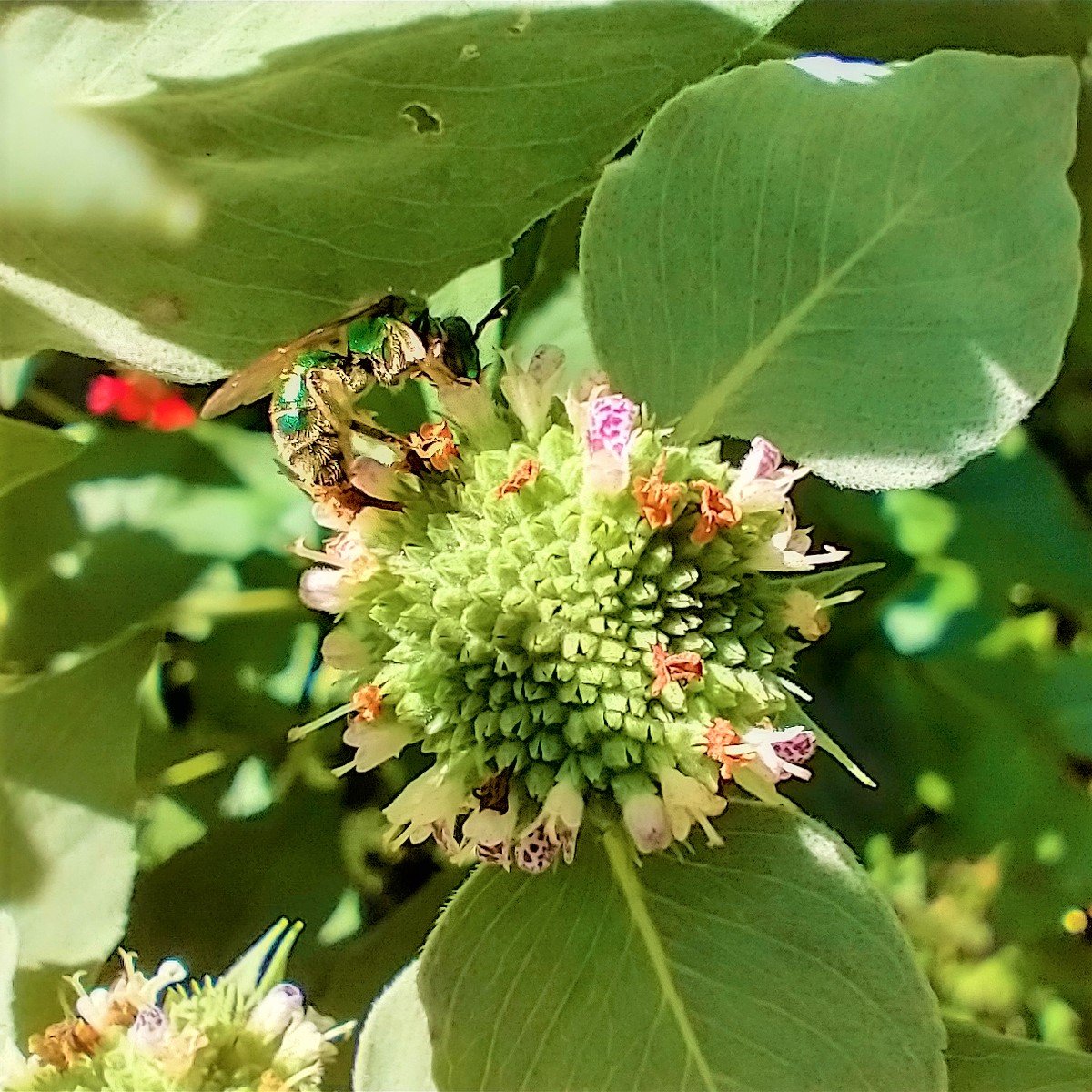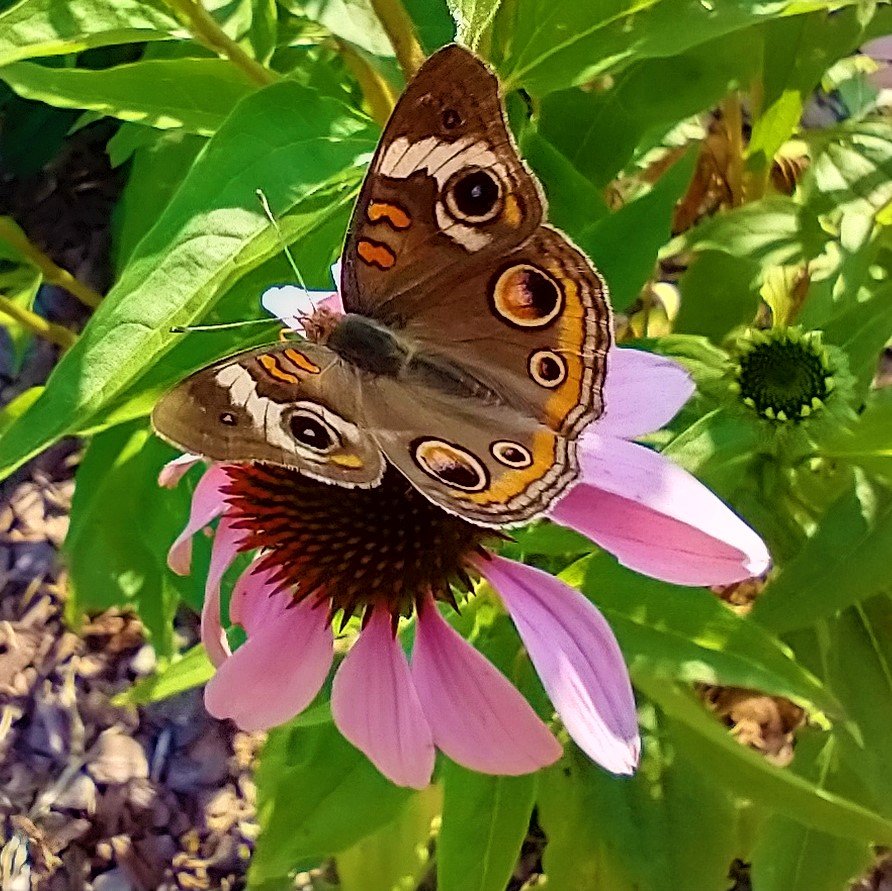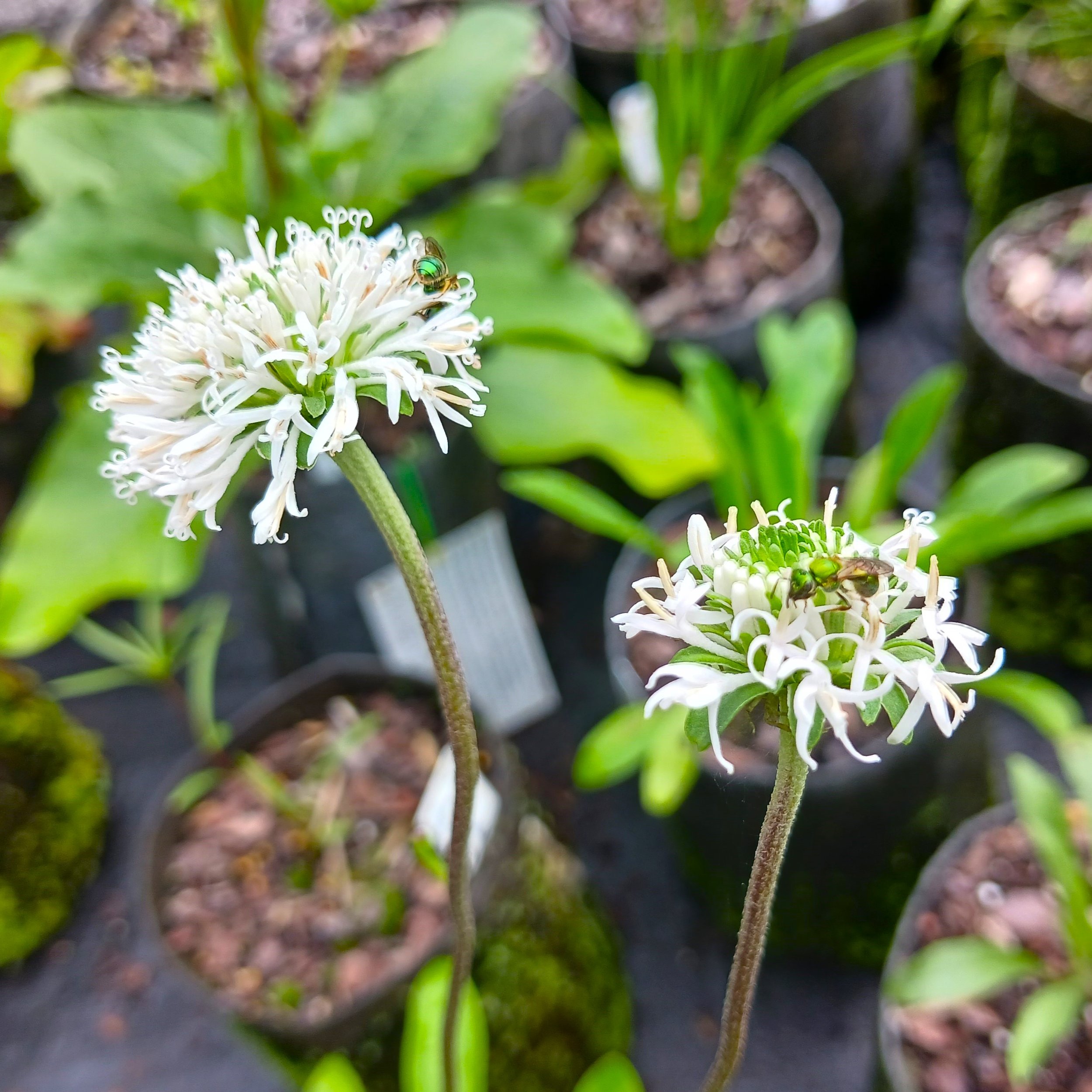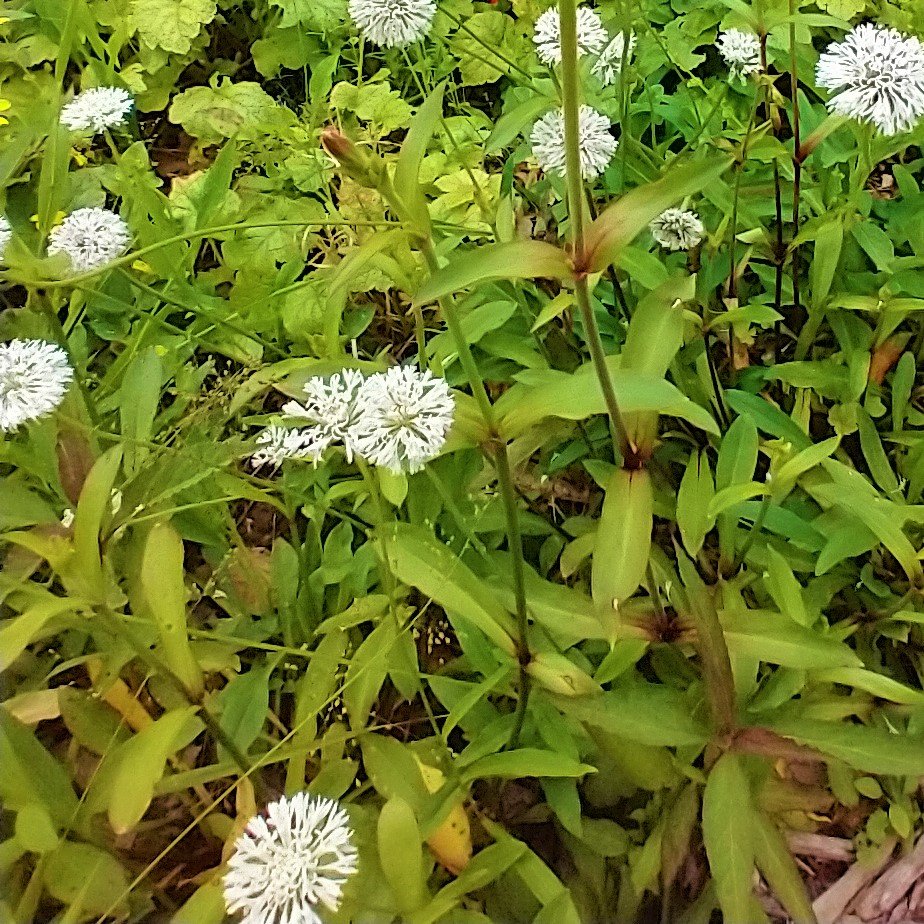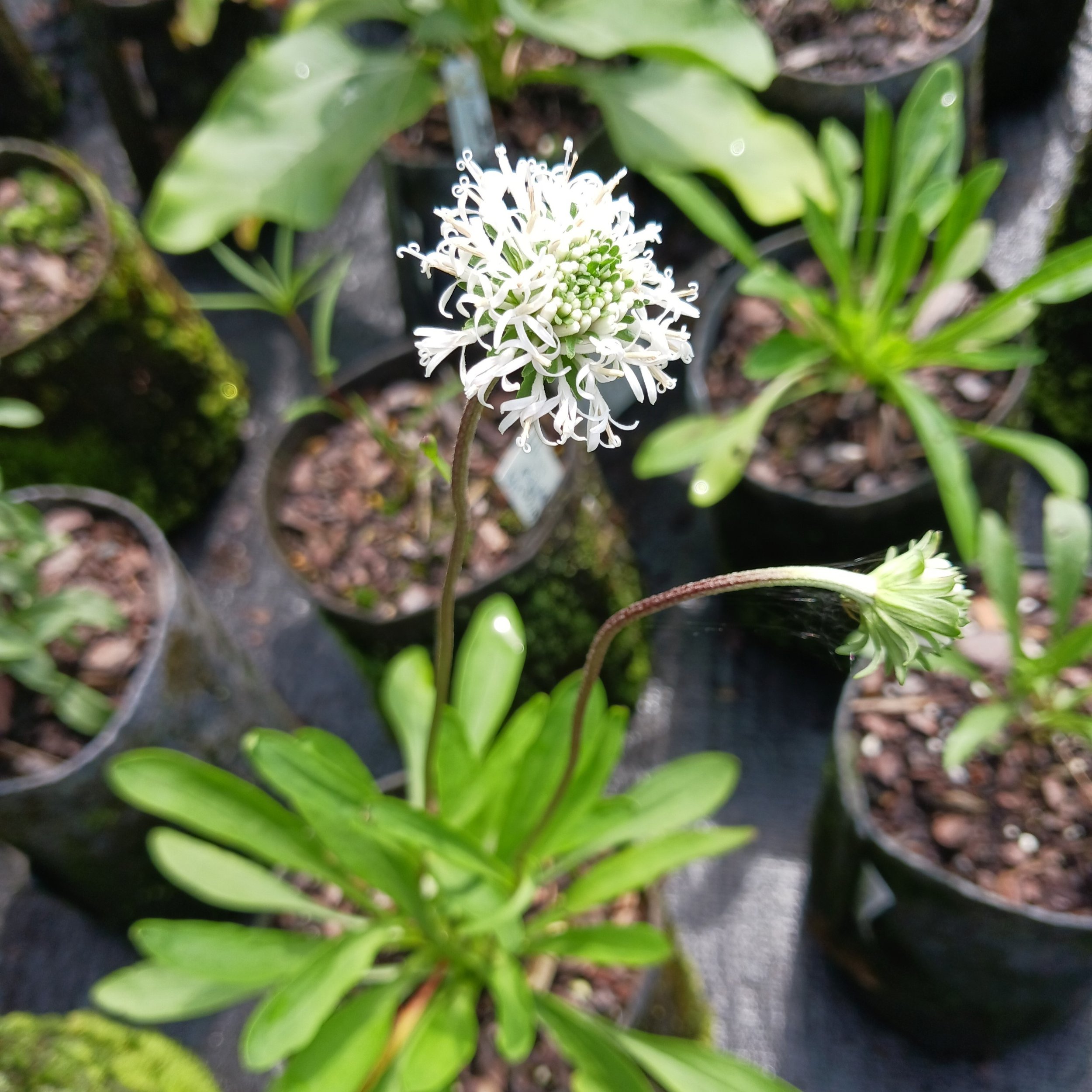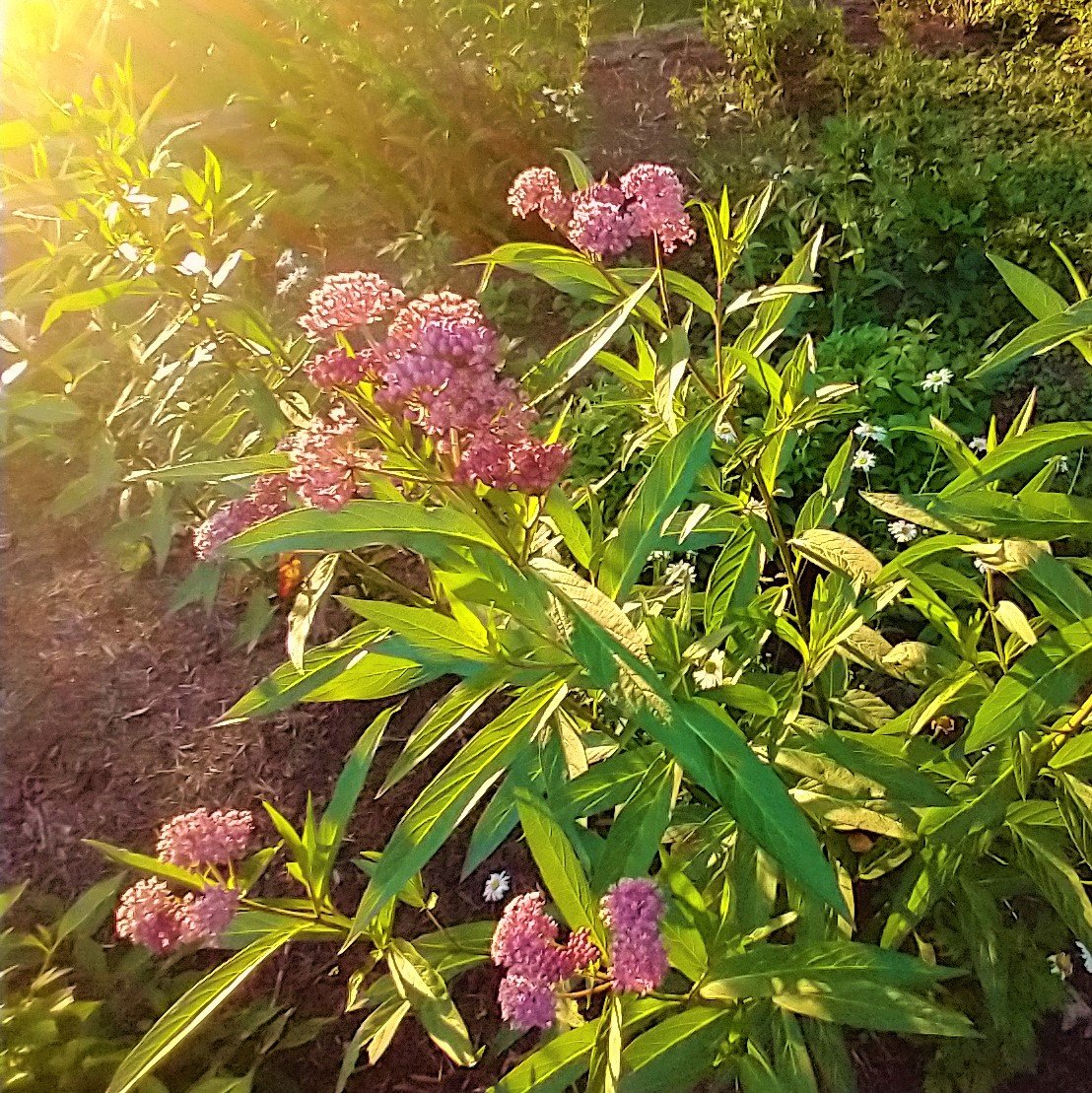Pycnanthemum muticum is one of many species of Mountain Mints native to our region. These perennials are similar to cultivated mints, producing a mint fragrance and flavor when crushed. They can grow quickly and are very robust in the right conditions, but are not as aggressive as non-native mints. Some landscapers enjoy this quality since Clustered Mountain Mint can form a large and beautiful display, which contrasts in color with taller wildflowers. This species has soft, round leaves that turn a silvery-mint green when in flower, and the flowers are a less conspicuous white with purple spots. Once established, flower stalks reach 3-4’ in height and are easily transplanted, though the frosted coloration of the leaves when fully in bloom is best appreciated in a dense planting. Although Clustered Mountain Mint can tolerate some periods of dryness, it grows best in moist to medium soils with at least 4 hours of direct sunlight, especially in summer., and it performs well in poor soils. In North Carolina, this species of Mountain Mint is found all over the state, both in the mountains and the coastal plain. When given thoughtful consideration, Clustered Mountain Mint is a great addition to the garden.
All of the native plants we offer at Bug Lovers are beneficial to our ecosystems in at least a few ways, but some really stand out. One of the reasons Pycnanthemum muticum is a favorite is due to the incredible diversity of different insect pollinators we have seen visiting these flowers in particular. The photos here are just a few of the different species we’ve seen, and it ranges from butterflies to a range of bees to unusual wasps and flower flies. This in addition to the insect herbivores like rare moth caterpillars which feed on the leaves. Also, we’ve been hearing reports that Eastern Box Turtles love to chow down on early spring growth of Pycnanthemum shoots, which makes sense since mammals avoid this one. And while the seeds may be too small to attract as many seed-eating songbirds as other plants, the bevy of insects do seem to attract nesting birds. Another advantage of Pycnanthemum is that it attracts lots of different predatory and parasitoid insects like many different types of wasps and flies. Some of these can help with controlling pest insects nearby, but can also be appreciated for their own natural beauty. If you or someone you know is a naturalist curious about the tiny creatures in our world, grow a patch of Mountain Mint, you will not be disappointed!
Pollinators: bumblebees, halictid bees, leafcutter bees, long-horned bees, mason bees, small resin bees, honey bees, butterflies, moths, bee flies, syrphid flies, tachinid flies, wasps, long-horned beetles, soldier beetles
Host Plant for Butterflies/Moths: 6+ species of Lepidoptera in our region, including the Orange Mint Moth (Pyrausta orphisalis)
Dependent Species: Chionodes pseudofondella
Wildlife Value: Box Turtles, Songbirds, Wood Warblers, shelter
Deer Resistance: Outstanding - probably the most deer resistant native plant
Native Region: Appalachian Mountains, Piedmont, Coastal Plain
Seed Origin: USA
USDA Zones: 4-8
States found in our region: AL, DE, GA, KY, MD, NC, PA, TN, VA, WV
Other states found: AR, CT, FL, IL, IN, LA, MA, ME, MI, MS, MO, NH, NJ, NY, OH, RI, TX, VT















